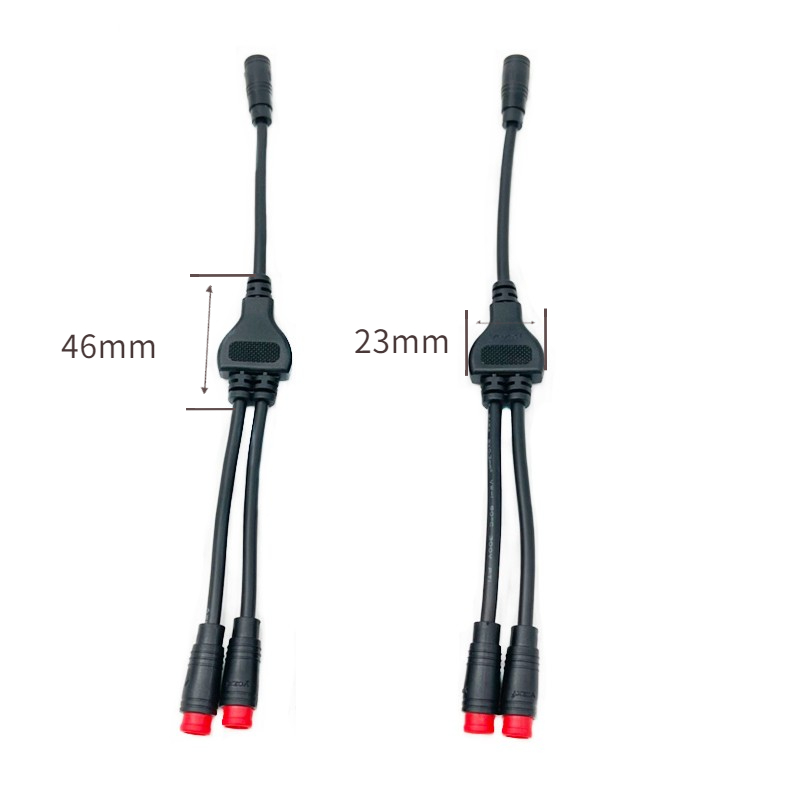News


News

5 Mistakes That Cause Failures in M8 3-Wire Waterproof Connector Systems (And How to Fix Them)
Release time:2025-04-21
viewed:385
M8 3-wire waterproof connectors are essential for industrial sensors, outdoor lighting, and low-voltage power systems. However, even minor installation or design oversights can lead to costly failures in harsh environments. This article uncovers the top mistakes that compromise M8 3-wire connectors and provides actionable fixes to ensure long-term reliability.

Symptoms: Overheating, voltage drop, melted insulation.
Why It Happens:
Using undersized wires for high-current applications (e.g., 24V/5A LED arrays with 22 AWG wires instead of 18 AWG).
Solutions:
Calculate current demand: Wire gauge = (Current × 1.25) / 3A per mm².
For 10A loads, use 16 AWG wires (1.3 mm²) with M8 connectors rated for 12A .
For signal lines (≤2A), 22 AWG (0.33 mm²) is acceptable.
Symptoms: EMI interference, erratic sensor readings, or electrical noise.
Why It Happens:
Failing to ground the connector shield or ignoring the ground pin (Pin 2) in 3-wire systems.
Solutions:
Always connect the ground pin (Pin 2) to the system’s common ground.
For shielded cables, terminate the shield to the connector’s metal shell using a crimp ferrule.
Use 360° shielded M8 connectors in high-EMI environments.
Symptoms: Water ingress (too little) or cracked housings (too much).
Why It Happens:
Excess silicone grease clogs threads, preventing proper O-ring compression.
Inadequate sealant leaves gaps for moisture penetration.
Solutions:
Apply silicone grease sparingly—a thin layer on O-rings and threads is enough.
For underwater use, add epoxy potting to the cable entry, leaving 1mm gap for flexibility.
Symptoms: Loose connections, water leaks, or stripped threads.
Why It Happens:
Hand-tightening without a torque wrench leads to uneven pressure on seals.
Solutions:
Tighten M8 connectors to 0.7–1.2 N·m (6–10 in-lb) using a calibrated torque wrench.
Mark alignment lines on the connector and housing to verify full engagement.
Symptoms: Corrosion, UV degradation, or chemical damage.
Why It Happens:
Using nylon housings in coastal areas or standard seals with oils/solvents.
Solutions:
Saltwater/chemical exposure: Choose 316L stainless steel M8 connectors .
UV-heavy outdoors: Use UV-stabilized PBT housings.
High temps (>100°C): Opt for silicone-sealed connectors .
Monthly: Inspect O-rings for cracks and clean contacts with isopropyl alcohol.
Annually: Reapply silicone grease and test insulation resistance (>100MΩ).
Every 3 years: Replace seals and re-pot connectors in submerged applications.
Q: Can M8 3-wire connectors handle 48V systems?
A: Yes—most industrial models support up to 60V DC.
Q: How to fix a corroded M8 connector?
A: Disassemble, clean contacts with a fiberglass pen, and apply antioxidant grease (e.g., NO-OX-ID).
Q: Are all M8 3-wire connectors waterproof?
A: No—verify IP ratings (IP67 for dust/water resistance, IP68 for submersion).
M8 3-wire waterproof connectors are deceptively simple, but avoiding these five mistakes can mean the difference between a system that lasts months versus decades. Prioritize proper wire sizing, grounding, and environmental protection—and don’t skip torque tools!